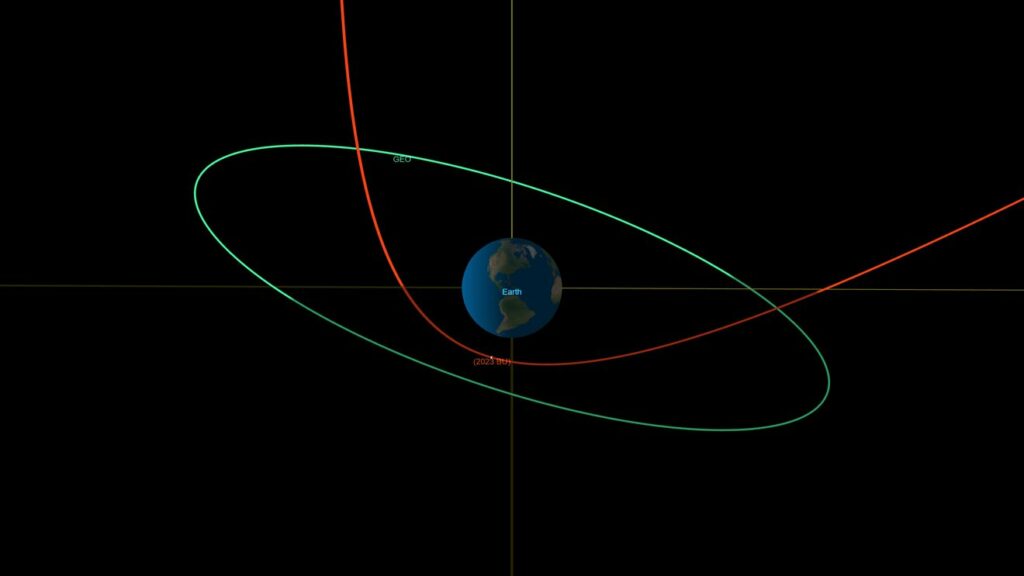A truck-sized asteroid that suddenly appeared out of the darkness a few days ago and seemed to be heading for our planet made one of the closest approaches by a near-Earth object ever recorded on Thursday, NASA announced.
"This is one of the closest approaches by a near-Earth object (an asteroid or comet whose orbit crosses that of the Earth) ever recorded," said Davide Farnocchia, a navigation engineer at the Jet Propulsion Laboratory (JPL), which developed NASA's impact risk assessment system, Scout.
At its closest point, the asteroid was 3,600 kilometres from the Earth's surface, much closer than many geostationary satellites orbiting the planet.
'Extraordinarily close'
The alarm was first sounded about the nearing object on Saturday by amateur astronomer Gennady Borissov, the discoverer of the interstellar comet Borissov in 2019, who first spotted it from an observatory in Crimea.
Dozens of sightings were made by observatories around the world, confirming the arrival of 2023 BU. “Scout quickly ruled it out as an impactor, but despite the very few observations, it was nonetheless able to predict that the asteroid would make an extraordinarily close approach with Earth,” said Farnocchia.
Even if the calculations had been wrong, the asteroid didn't really pose an existential threat to life as we know it. Measuring between 3.5 and 8.5 metres in diametre, it would have turned into a fireball and largely disintegrated in the atmosphere. At worst, just a few fragments would have landed on the Earth's surface.
Related News
- Last Apollo 7 astronaut, Walter Cunningham, dies at age 90
- More UFO reports in 2022: Most cases easily explained, Belgian hotline notes
As is the case with any asteroid in Earth’s proximity, 2023 BU will experience a change in trajectory due to our planet’s gravitational field. Its proximity means that its path around the Sun is expected to be "significantly altered."
"Before encountering Earth, the asteroid’s orbit around the Sun was roughly circular, approximating Earth’s orbit, taking 359 days to complete its orbit about the Sun. After its encounter, the asteroid’s orbit will be more elongated, moving it out to about halfway between Earth’s and Mars’ orbits at its farthest point from the Sun. The asteroid will then complete one orbit every 425 days."

